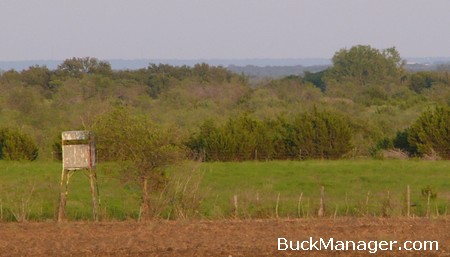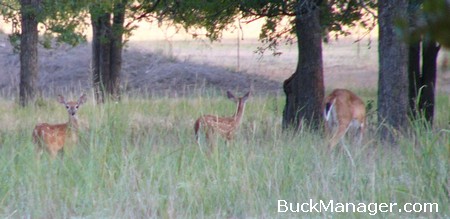
The upcoming white-tailed deer hunting season is looking good for Texas hunters. Despite the horrendous drought of 2011, habitat conditions quickly rebounded last fall after some much-needed rain. It was not nearly enough, but it helped big time. In addition, acorn crops ranged from decent to good in many areas across the state, which was pretty amazing. This was good for deer populations because it gave them abundant food sources when they needed it most, right before winter. Not only did the buffet of natural foods allow deer to recover physically, but the mild winter meant whitetail did not have to move around in search of food, which is typically when deer make themselves available for harvest.
As a result, many hunters did not see nearly the number of deer that they thought they would. The corn under the feeders did not get immediately inundated by hungry deer. Now this was not the case everywhere. Some areas did not fair so well with regards to fall precipitation. Some areas lack oak trees, acorns and the fat-rich calories they pack for winter whitetail. But much of Texas’ whitetail population pulled through well and entered the year is good shape. Did some deer die off last year? Yes, of course, but then again some always do.
The word on the street was that blue tongue and EHD—both deer diseases that are common during hot, dry weather— took their toll on a few deer across the state. But this is Texas and those conditions are par for the course. How many died? Depended on the area, but probably not as many as you’d think considering the severity of last year’s drought. Conditions were rough, but it all turned around during archery season when Mother Nature threw Texas’ whitetail deer herd a bone.
Sure, the excellent habitat conditions many areas experienced last fall made deer hunting tough. It was warm and green—never a good recipe for deer hunting, at least from my experiences. But more deer made it through the season than one would have guessed. This means more and older bucks for the upcoming hunting season as well as more breeder does in the population. Ranches that I have spoken with have reported that whitetail deer are looking good in 2012. Game camera photos and deer survey results have revealed good antler growth and good fawn production. Both good things from a deer hunters perspective.

Most deer managers have also reported a substantial decline in the amount of supplemental feed/protein pellets that have fed this year. No one is complaining about that, deer included, except maybe the manufacturers and feed stores. The recent August rains received across much of Texas have only helped that cause. Some parts of the state received over five inches!
Shaded and riparian areas will see new forb growth and browse plants may even put on some new stems and leaves. Much of the buck antler growth is over with for this year, except for South Texas, but the recent summer rains will really help does and fawns going into the fall. Fawn numbers are always an indicator of future deer hunting potential, so it’s encouraging to hear about fawning rates of 80+ percent in free-ranging deer herds. Even ranches that fed protein pellets saw poor fawn crops last year, but what a difference a year makes. Deer hunting in Texas is looking good, so I am really looking forward to the 2012-13 season!